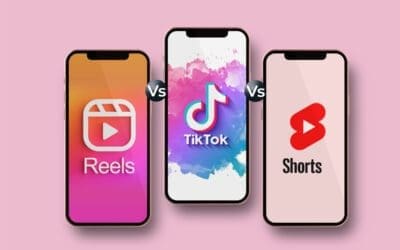Is the creator economy still the gold rush it once promised to be, or is it evolving into a more fragmented, complex landscape? Once celebrated as a space of freedom, opportunity, and direct connection between creators and audiences, the industry now supports over 207 million content creators worldwide, with 162 million in the U.S. alone, 45 million of whom work professionally. Yet monetization can be slow: the average creator takes about six and a half months to earn their first dollar.
As new platforms emerge and old ones lose traction, creators face rising pressure to diversify income streams, maintain multi-platform visibility, and adapt to changing brand expectations. In this blog, we unpack the current state of the creator economy, explore why influencer marketing is shifting, and examine what this fragmentation means for creators, brands, and digital platforms moving forward.
What Is the Creator Economy?

The creator economy is a decentralized ecosystem of content creators, full-time, part-time, or hobbyists, who earn income through audiences and digital platforms. In 2025, there are over 207 million active creators worldwide, with micro creators (1K–10K followers) forming the largest group. While only 4% earn $100K+ per year, about 45% work full-time creating content (Maldonado, 2025).
Creators generate revenue through brand partnerships, ads, subscriptions, and digital products, often using multiple income streams to stay sustainable. The creator economy is no longer just about social media fame; it’s a $191 billion industry in 2025, projected to reach $528 billion by 2030 (Maldonado, 2025).
The Fragmentation Begins: Why It’s Happening
The creator economy isn’t crashing, but it is splintering. What started as a promising landscape of open opportunity is now becoming harder to navigate, both for creators and brands.
1. Platform Overload and Creator Burnout
Creators today must juggle multiple platforms, such as YouTube, TikTok, Instagram, Substack, Threads, and more, because relying on just one is risky. Algorithm changes, policy updates, or sudden drops in visibility can instantly affect their reach and income. Diversifying across channels has become less of a strategy and more of a survival tactic in the highly competitive creator landscape.
This constant pressure contributes to widespread burnout. A 2025 survey by Billion Dollar Boy found that 52% of creators have experienced burnout, with 37% considering leaving the profession entirely. Creative fatigue, demanding workloads, and financial instability are the main stressors, affecting both well-being and career momentum. As burnout becomes a systemic challenge, brands, platforms, and agencies are increasingly being called on to provide support and sustainable structures for creators.
2. Unstable Monetization Models
Earning a living as a creator remains unpredictable. While YouTube offers relatively steady ad revenue, platforms like TikTok and Instagram have historically been inconsistent. TikTok’s original Creator Fund, launched in 2020, paid just $0.02–$0.04 per 1,000 views, translating to $20–$40 for 1 million views, leading many creators to seek outside income through brand deals, merchandise, or subscriptions.
The fund officially ended in December 2023, replaced by the Creativity Program, which now rewards longer videos at $0.40–$1.00 per 1,000 views, reflecting the platform’s shift toward sustainable, performance-based earnings.
Beyond platform payouts, TikTok creators increasingly rely on alternative revenue streams such as live gifts, TikTok Shop commissions, affiliate marketing, and cross-platform content promotion. Top creators like Charli D’Amelio reportedly earn over $100,000 per sponsored post, highlighting the gap between casual and elite earners.
The evolution of TikTok’s monetization demonstrates a broader trend in the creator economy: income is diversifying, performance-driven, and often dependent on multi-channel strategies rather than a single platform fund.
3. Brand Expectations Are Shifting
As the landscape evolves, so do brand strategies. Companies are no longer dazzled by follower counts alone; they want influencers who offer measurable engagement, audience trust, and brand alignment. This shift is driving more creators to refine their niches or risk losing out on deals entirely. Take a look at how the creator economy is reshaping modern marketing.
The fragmentation of the creator space reflects its growing pains. As creators diversify platforms, income sources, and audience strategies, it becomes clear: there’s no longer one path to success, just an increasingly complex map.
Creators Are Becoming Entrepreneurs

As the creator economy fragments, many creators are taking control of their futures by becoming full-on entrepreneurs. They’re building courses and communities (e.g., Notion templates, writing clubs, Discord groups), subscription models via Patreon, Substack, or Ko-fi, merchandise, and DTC brands like Emma Chamberlain’s Chamberlain Coffee, and digital products such as filters, presets, and eBooks.
The key shift? Audiences aren’t just passive viewers anymore; they’re customers. Creators are increasingly treating their platforms as businesses, not just creative outlets.
This trend is backed by data: 45% of creators now have multiple income streams beyond traditional brand deals, and 67% of monetized creators sell some kind of product, whether through marketplaces like Etsy or directly via their own websites. These numbers highlight how entrepreneurship is becoming the norm in the creator community, empowering creators to diversify income, deepen audience engagement, and build sustainable careers.
The Rise of Decentralized Creator Tools
A new wave of platforms is changing how creators make money online. Built on Web3, tools like Zora, Sound.xyz, and Farcaster let creators sell digital items called NFTs, think of them as unique collectibles that prove you own a piece of content, like a song, video, or artwork.
Creators can also “tokenize” their work, turning posts, videos, or songs into assets that fans can buy, sell, or support directly. In other words, creators can earn money straight from their audience, rather than relying on ads or algorithms.
Unlike traditional social media, these Web3 tools let creators keep more control over their content and audience. Platforms like Lens Protocol are even building decentralized social networks where creators truly own their fan relationships. This model is still new and has challenges, limited reach, tricky interfaces, and learning curves, but it shows a larger trend: creators want more ownership, independence, and fair ways to monetize their work.
Web2 vs. Web3 creator monetization:
| Feature | Web2 (YouTube, Instagram) | Web3 (Zora, Sound.xyz) |
|---|---|---|
| Revenue Source | Ads, brand deals | Direct sales, NFTs, tokens |
| Ownership | Platform owns audience data | Creator owns audience relationships |
| Earnings Control | Limited, algorithm-dependent | More control, decentralized |
| Monetization Speed | Slow, requires platform approval | Instant, peer-to-peer |
| Audience Participation | Passive | The platform owns audience data |
Influencer Marketing in a Fragmented World
So, where does influencer marketing fit into this puzzle?
What’s Working:
- Authentic brand-creator relationships: Long-term partnerships over one-off ads.
- Niche influencers: Those with tight, dedicated audiences in verticals like finance, wellness, parenting, or design.
- Short-form + long-form combo: Reels and TikToks generate interest, while newsletters or YouTube videos build deeper engagement.
Case Study: In 2024, CeraVe shifted its influencer strategy from mega-celebrities to niche micro-influencers in dermatology and wellness. By collaborating with smaller, trusted creators rather than focusing solely on reach, the brand achieved a 27% increase in audience engagement and a 15% boost in product sales over six months. This case highlights how specificity and authentic partnerships can outperform campaigns that rely only on high follower counts.
What’s Not Working:
- Overproduced content: Audiences crave authenticity, not polish.
- High-follower vanity metrics: Brands care more about conversion than reach.
- One-size-fits-all campaigns: Fragmentation means you can’t treat every creator the same.
For marketers, the takeaway is clear: shift focus from scale to specificity. Partner with creators who move the needle in their space, not just those with flashy numbers.
What This Means for Creators

To succeed in a fragmented creator economy, today’s creators need more than good content; they need a flexible, business-minded strategy.
1. Diversify Revenue Streams
Relying solely on AdSense or brand deals is risky. Successful creators now combine multiple income sources, affiliate links, premium subscriptions (Patreon, Fanhouse), digital products (courses, templates, presets), and live or virtual events. A diversified approach cushions against platform changes and revenue dips.
For a more sustainable approach, creators can benefit from a clear, adaptable content strategy that aligns with their goals and audience behavior.
2. Build Owned Channels
Email newsletters, SMS lists, and private communities (Discord, Substack) give creators direct access to their audience, bypassing algorithms. Even if a platform’s reach drops, creators can still launch products and monetize on their own terms.
3. Embrace Collaboration
Collaborations today go beyond guest appearances or shoutouts. Creators are launching joint podcasts, co-hosting livestreams, or bundling digital offerings like a productivity YouTuber teaming up with a designer to sell a bundled habit tracker. Working together helps creators tap into new audiences and build brand equity faster.
4. Stay Nimble
With new platforms like Lemon8 or decentralized apps like Farcaster emerging, being adaptable is key. This doesn’t mean hopping on every trend, but testing new formats or platforms early can help creators spot where their communities are organically shifting. Think of it as market research in real time.
What This Means for Brands
Brands can no longer afford to treat creators as mere ad space. In this fragmented economy, creators are creative partners and cultural translators.
Actionable brand tips:
- Go niche: Identify micro-creators whose values align with your brand. These creators often have dedicated audiences in specific niches, leading to more authentic engagement.
- Prioritize fit: Choose influencers who genuinely use or would use your product. Authenticity resonates more with audiences than celebrity endorsements alone.
- Let go of control: Trust creators to present your product in their unique voice. This approach fosters genuine content that audiences find more relatable and trustworthy.
- Value long-term: Instead of one-off campaigns, build enduring partnerships with creators. Long-term collaborations can lead to sustained brand loyalty and deeper audience connections.
The Creator Economy Isn’t Dead, It’s Evolving

The creator economy isn’t dying, it’s growing up. Fragmentation doesn’t signal failure; it signals evolution. We’re moving from hustle culture to strategic growth, from chasing trends to creating purpose-driven content.
Creators are building smarter. Audiences are expecting more. Platforms are changing the rules. And influencer marketing is adapting to keep pace.
The real question isn’t, “Will the creator economy survive?” It’s, “Are you ready for where it’s headed?”
If this shift resonates with you or if you’re noticing it in action, drop a comment below and share your perspective. How do you see the future of the creator economy unfolding? Let’s start the conversation.
FAQs About Creator Economy
1. Can anyone become a content creator today?
Yes. With over 207 million creators worldwide, anyone with internet access and a unique perspective can start creating content. Success depends more on consistency, niche focus, and audience engagement than follower count.
2. How long does it take to earn money as a creator?
On average, new creators take about six and a half months to earn their first dollar. Monetization speed depends on factors like niche, platform, content quality, and marketing strategy.
3. Are digital products profitable for small creators?
Absolutely. Even micro-creators can sell templates, presets, eBooks, or digital courses. About 67% of creators who monetize are already selling products, showing that small audiences can generate meaningful income if engagement is strong.




0 Comments